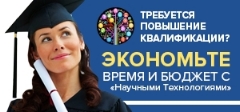Naumova N. A. (Lecturer, ITMO National Research University (St. Petersburg))
Barsukov I. A. (Lecturer, ITMO National Research University (St. Petersburg))
Mashina E. A. (Lecturer, ITMO National Research University (St. Petersburg))
Bostrikova D. K. (Lecturer, ITMO National Research University (St. Petersburg))
| |
The article describes the method proposed by the authors for solving the task of automating the testing of the user interface of a mobile application.
The presented solution is designed to test the functionality of the mobile application under test and includes checking the capabilities of the user interface, including interaction with controls, navigation, and response to user input. The novelty of the proposed method consists of the developed universal method of testing the user interface of mobile applications, organised using the PageObject pattern.
The proposed approach allows you to automatically generate test scenarios based on the analysis of transitions between application pages while providing the greatest coverage of transitions and methods associated with them, which allows you to effectively investigate the functionality and behaviour of the user interface of the mobile application under test.
Keywords:system testing, test automation, user interface testing, code generation, mobile testing, PageObject pattern
|
|
| |
|
Read the full article …
|
Citation link:
Naumova N. A., Barsukov I. A., Mashina E. A., Bostrikova D. K. AUTOMATED METHOD FOR GENERATING TEST SCENARIOS TO CHECK THE CORRECTNESS OF TRANSITIONS BETWEEN MOBILE APPLICATION ELEMENTS // Современная наука: актуальные проблемы теории и практики. Серия: Естественные и Технические Науки. -2023. -№07. -С. 112-118 DOI 10.37882/2223-2966.2023.07.26 |
|
|






